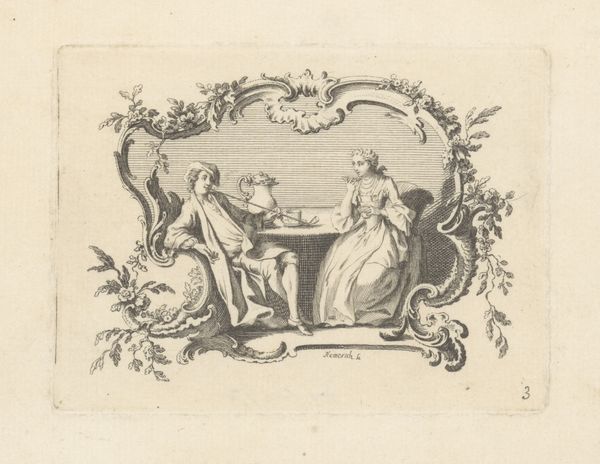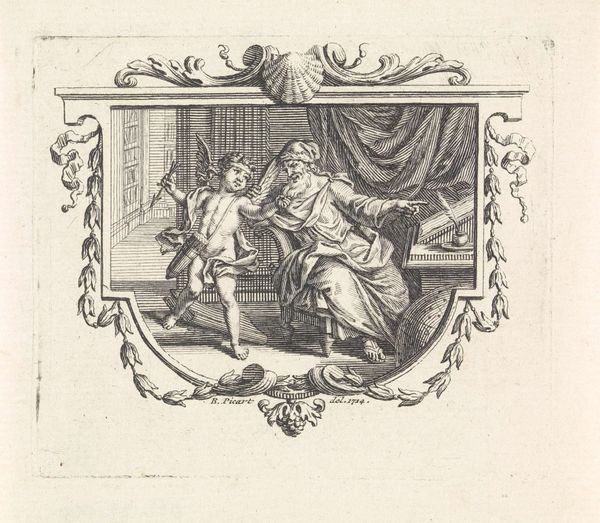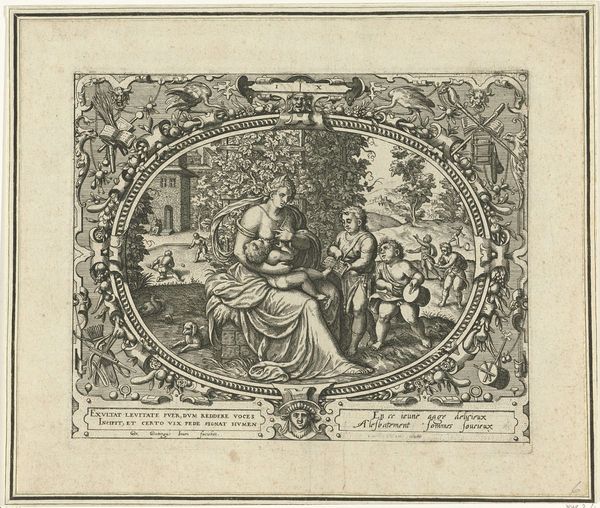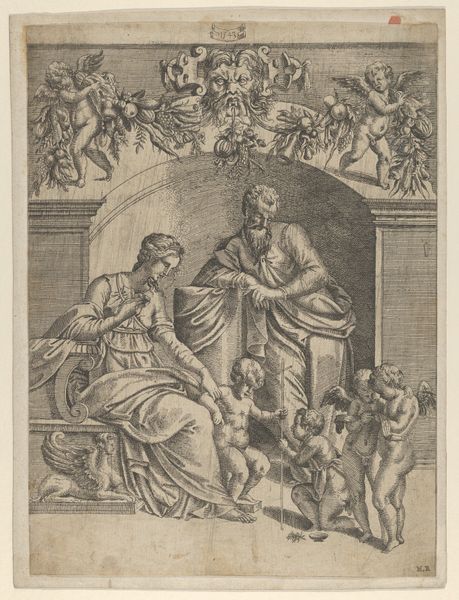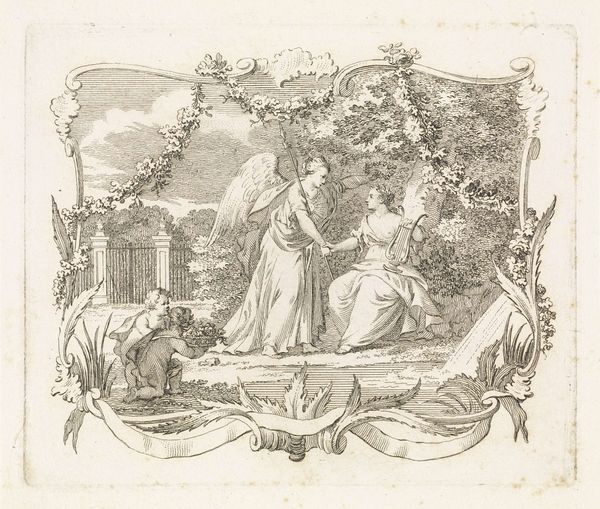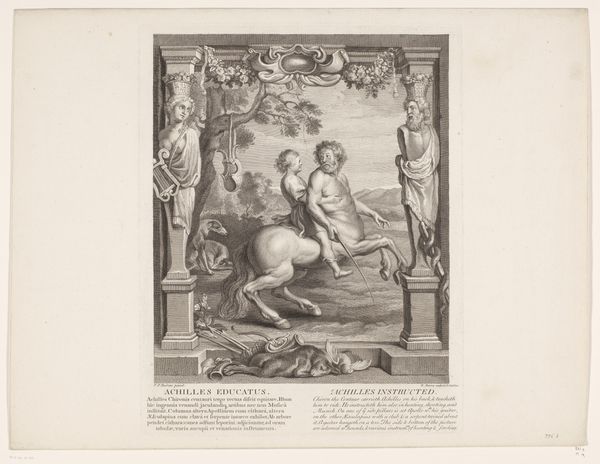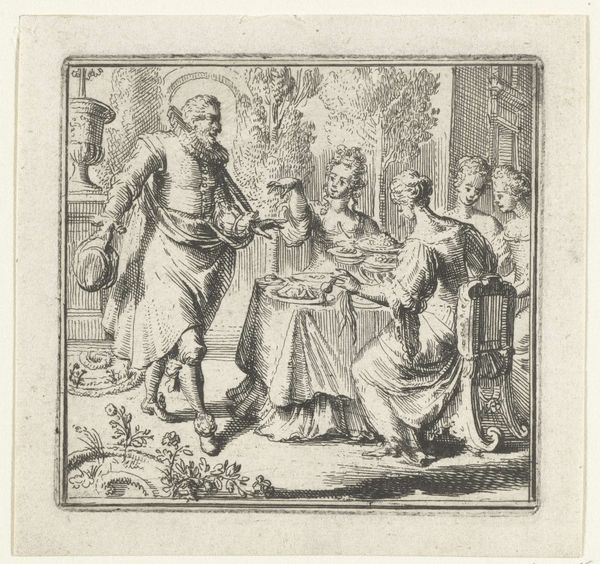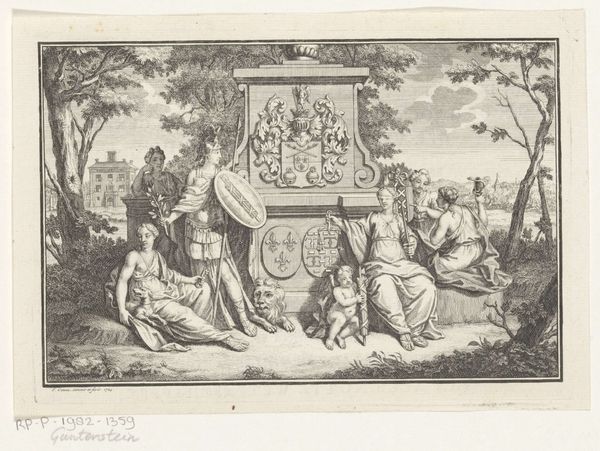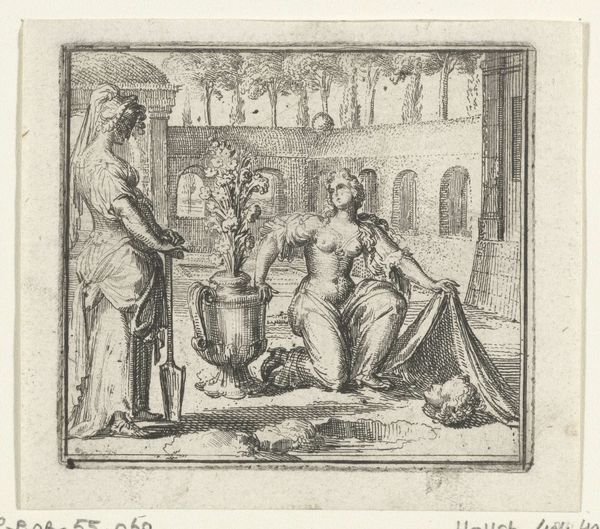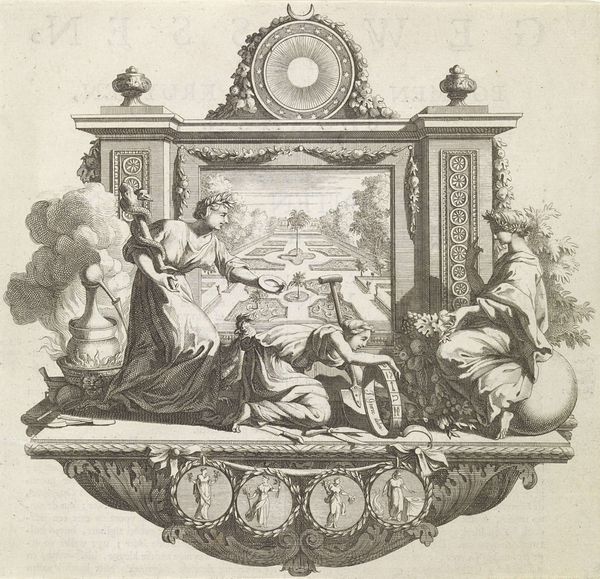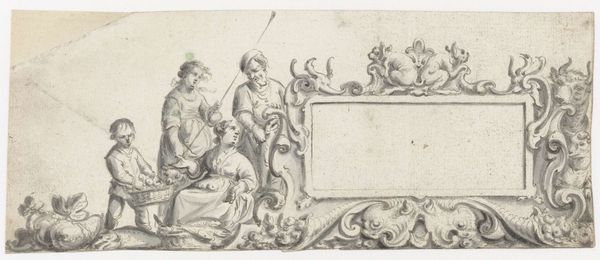
Vrouw en pijprokende man aan tafel in een cartouche 1731 - 1788
0:00
0:00
drawing, print, intaglio, paper, ink, engraving
#
portrait
#
drawing
#
toned paper
#
baroque
#
pen drawing
# print
#
pen illustration
#
pen sketch
#
intaglio
#
old engraving style
#
paper
#
personal sketchbook
#
ink
#
ink drawing experimentation
#
pen-ink sketch
#
pen work
#
sketchbook drawing
#
genre-painting
#
engraving
Dimensions: height 78 mm, width 104 mm
Copyright: Rijks Museum: Open Domain
Editor: Here we have Johann Esaias Nilson's "Vrouw en pijprokende man aan tafel in een cartouche," made sometime between 1731 and 1788. It looks like an engraving, maybe intended for a book. The detail is incredible! I’m struck by how domestic and posed it feels, like a snapshot of bourgeois life. What can you tell me about this work? Curator: What strikes me is the carefully constructed nature of this domesticity. It invites us to question whose story is being told and whose is being left out? Notice how the cartouche itself, that decorative frame, seems to legitimize and contain this scene. How does this presentation influence our perception of the subjects and their social standing? Editor: I see what you mean. The frame is almost like a stage, presenting a curated image. It makes me wonder, were these images circulated to reinforce specific societal roles? Curator: Precisely. Think about the power dynamics inherent in portraiture, especially in this period. Who had access to commissioning or possessing such images? What messages were being communicated about gender roles, leisure, and wealth? Does the act of smoking by the man and drinking by the woman hint at something beyond just simple domesticity? Editor: That's a really interesting point. It’s like the artist is trying to say something more about their roles within that domestic space, hinting maybe at subtle critiques of those roles, even while operating within their constraints. Curator: Exactly! By considering the intersection of gender, class, and representation, we can unpack the complex layers of meaning embedded in seemingly simple scenes like this. It reminds us that art is never truly neutral. Editor: This has really shifted how I see the piece. It's more than just a genre scene; it's a statement, however subtle, on the societal power dynamics of the time. Thank you! Curator: My pleasure! It’s through these kinds of critical dialogues that we can unearth the hidden narratives and challenge traditional art historical interpretations.
Comments
No comments
Be the first to comment and join the conversation on the ultimate creative platform.
